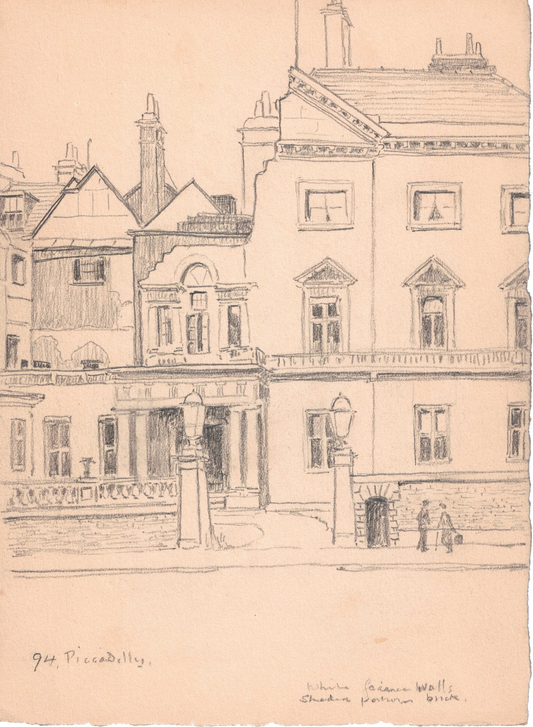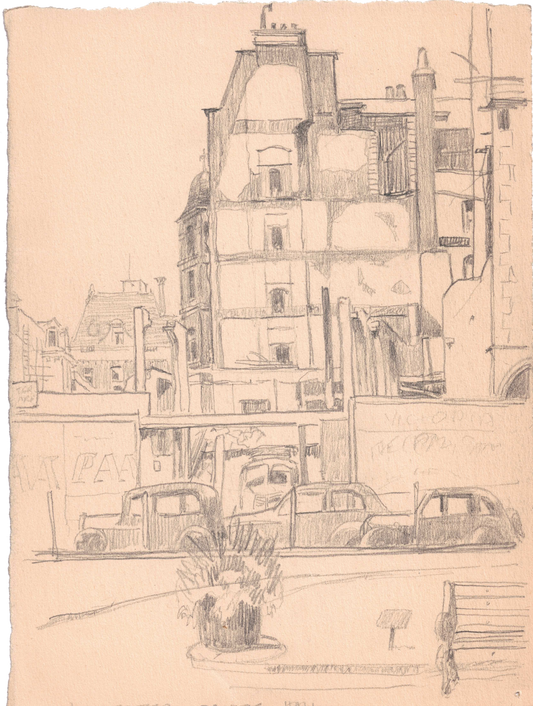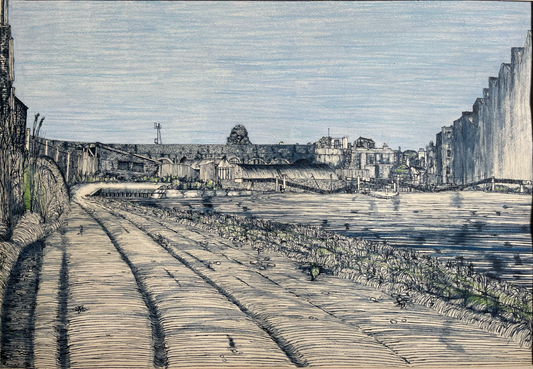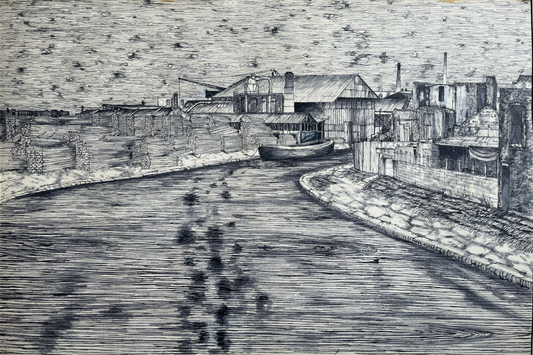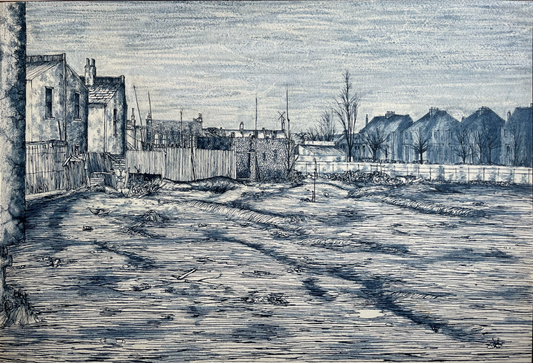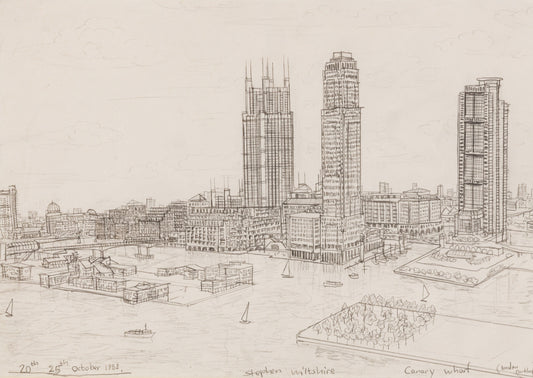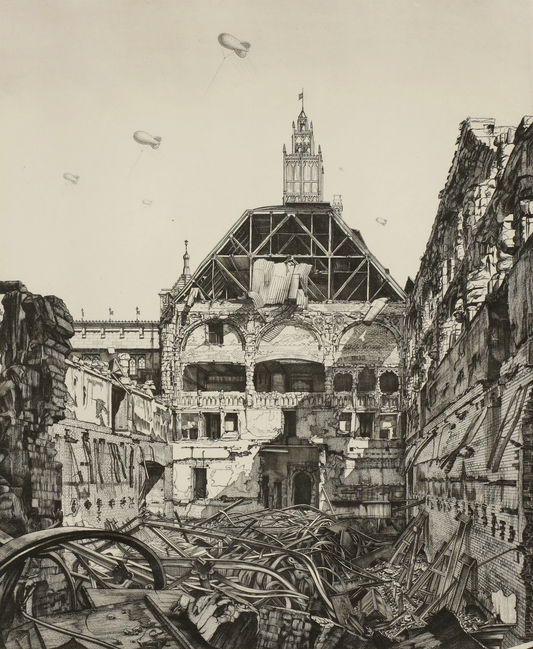
Curated by McEwing-Sexton-Smedley Fine Art, and exhibited at Create Streets Foundation.
With thanks to Gerrish Fine Art for additional artworks.
27th June, 30th June - 3rd July 2025
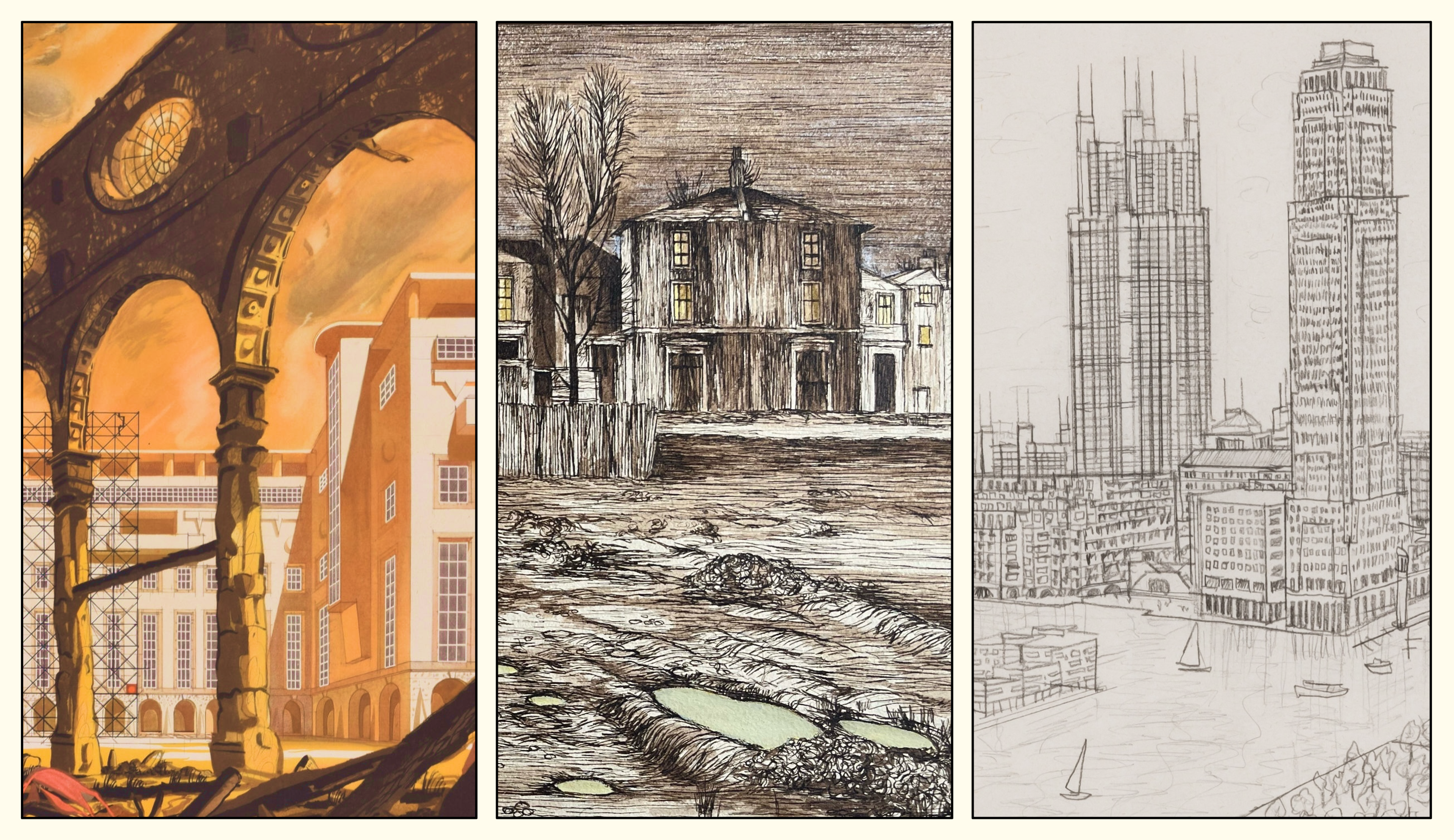
Shadow City explores the lost and imagined forms of London, seeking to uncover the forgotten and obscured elements of London’s past. The exhibition spans three centuries - from the late 17th century with Christopher Wren’s plans for rebuilding the City after the Great Fire, to the late 20th century, with a rare contemporary depiction of the Winter of Discontent and artworks opposing the potential conversion of Battersea Power Station into a theme park.
As Nicholas Boys Smith writes in the foreword to the accompanying catalogue: How many Londons are there? How many Londons have there been? How many Londons were never created? Would Charles Dickens identify modern Vauxhall as London? Would we discern our local high street beneath its Victorian clothing of costermongers and striped awnings, market stalls and hackney carriages, parasoled-ladies and sandwich men? Surely no time-travelling Tudor burgher would recognise the modern city? However, position him carefully in Westminster Abbey, besides Staples Inn, in Middle Temple or by the Charterhouse and he might. Can a city keep changing and still be the same place? And, as we walk the streets of modern London, can we imagine the shadow cities besides us of what was and what might have been?
Shadow City is divided into three sections. ‘A Modern Babylon?’ reflects on the development of the modern perception of London, and the elements of it that have been lost to our modern understanding. ‘Late Victorian Chelsea’ contains a wealth of engravings by Theodore Roussel, depicting the life and energy present within Victorian Chelsea. ‘Changing Tides’ explores the development and decline of the Thames, from the Port of London’s rapid expansion in the late 18th century to the Post-War collapse of London’s docks.
-
 Sold out
Sold outSouth Transept of St Paul’s
Regular price £300.00 GBPRegular priceUnit price / per -
 Sold out
Sold outTufton Court
Regular price £400.00 GBPRegular priceUnit price / per -
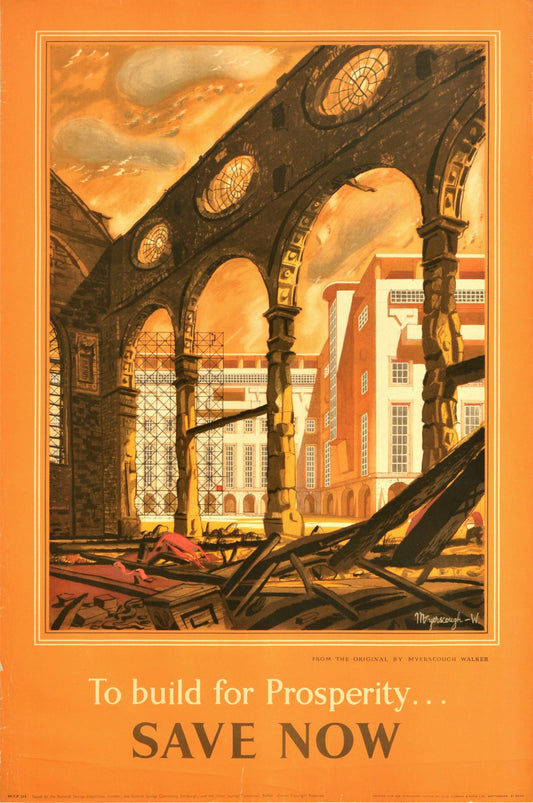 Sold out
Sold outTo Build for Prosperity
Regular price £500.00 GBPRegular priceUnit price / per -
St Paul's Cathedral
Regular price £175.00 GBPRegular priceUnit price / per -
94 Piccadilly (Cambridge House)
Regular price £200.00 GBPRegular priceUnit price / per -
Leicester Square Hall
Regular price £150.00 GBPRegular priceUnit price / per -
 Sold out
Sold outSt James's Piccadilly
Regular price £200.00 GBPRegular priceUnit price / per -
 Sold out
Sold outSt Stephen's Walbrook
Regular price £200.00 GBPRegular priceUnit price / per -
 Sold out
Sold outTowards Westminster Cathedral
Regular price £150.00 GBPRegular priceUnit price / per£250.00 GBPSale price £150.00 GBPSold out -
 Sold out
Sold outTower Bridge
Regular price £300.00 GBPRegular priceUnit price / per -
 Sold out
Sold outTowards New London Bridge
Regular price £300.00 GBPRegular priceUnit price / per -
 Sold out
Sold outNew London Bridge
Regular price £200.00 GBPRegular priceUnit price / per£300.00 GBPSale price £200.00 GBPSold out -
Canal Lock Gates
Regular price £450.00 GBPRegular priceUnit price / per -
Bermondsey Canal
Regular price £450.00 GBPRegular priceUnit price / per -
Canal Scene, Autumn
Regular price £500.00 GBPRegular priceUnit price / per -
South London Autumn
Regular price £400.00 GBPRegular priceUnit price / per -
Street Near the Docks: Poplar
Regular price £500.00 GBPRegular priceUnit price / per -
Waste Plot: Camberwell
Regular price £400.00 GBPRegular priceUnit price / per -
Canary Wharf
Regular price £1,500.00 GBPRegular priceUnit price / per -
House of Commons
Regular price £600.00 GBPRegular priceUnit price / per




